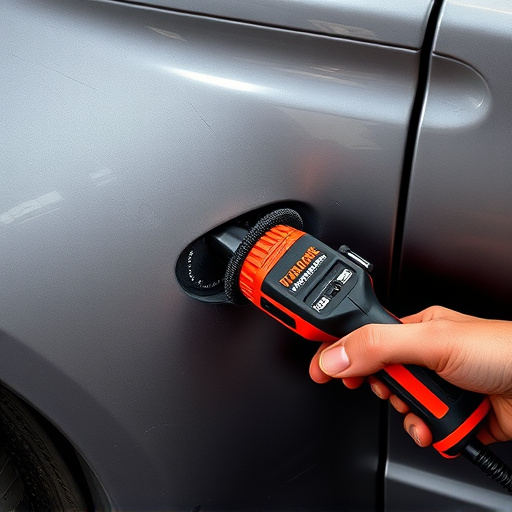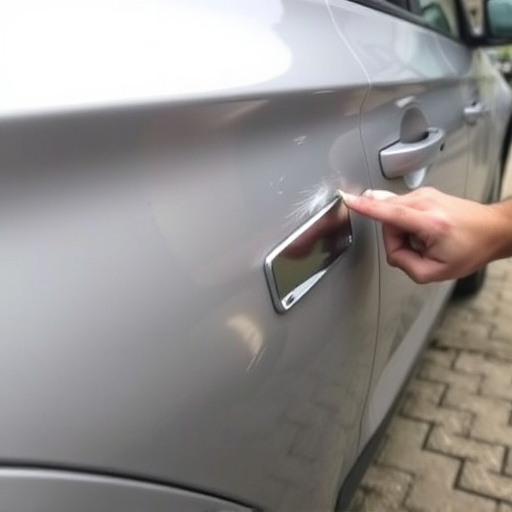TL;DR:
When explaining repair options, tailor your communication based on customers' automotive knowledge level, using simple language for beginners and detailed insights for enthusiasts. Address emotional triggers empathetically. Simplify explanations with plain language, focusing on visible outcomes and benefits to make information accessible. Personalize repairs' impact to empower clients, build trust, enhance satisfaction, and foster loyalty.
In the realm of customer service, effectively communicating repair options is a delicate dance. Whether you’re mending a gadget, a vehicle, or a home appliance, understanding your audience’s needs and background is paramount. This article explores proven strategies to deliver clear and concise repair option explanations, from gauging customer knowledge to employing interactive tools. By mastering these techniques, you’ll ensure clients grasp the options available, fostering trust and satisfaction.
- Understanding Your Audience's Needs and Background
- – Assessing customer knowledge level and emotional state
- – Tailoring explanations to match their understanding
Understanding Your Audience's Needs and Background

Before crafting a repair option explanation, it’s crucial to understand your audience’s needs and background. Different individuals have varying levels of knowledge about automotive repairs, from none at all to a solid understanding of basic mechanics. Tailoring your explanation accordingly ensures clarity and comprehension. For instance, when addressing customers at an auto collision center, start with simple, straightforward language, avoiding complex technical jargon. Explain each repair option in plain terms, highlighting the benefits and potential outcomes for their vehicle restoration process.
By considering your audience’s expertise, you can create a repair option explanation that resonates with them. If dealing with car damage repair enthusiasts, include more detailed insights into the techniques and materials used. Conversely, for those new to the concept of car damage repair, focus on demystifying the processes, assuring them that their vehicle will be returned to pre-incident condition through expert care and skilled craftsmanship. This approach fosters trust and ensures every customer receives a comprehensive yet accessible understanding of their repair options.
– Assessing customer knowledge level and emotional state

Understanding your customer’s knowledge level and emotional state is key when presenting a repair option explanation for their vehicle. Customers can range from complete novices, unfamiliar with auto terms, to seasoned drivers with an extensive understanding of automotive repair. Tailoring your communication style accordingly ensures clarity and builds trust. For instance, simplify technical jargon for beginners, while engaging in more detailed discussions with experienced customers who might ask insightful questions about the process or alternative solutions.
Recognizing emotional triggers is equally important. A car issue can cause stress, anger, or even fear, especially if it’s an unexpected repair. Empathetic communication helps alleviate these feelings by acknowledging their concerns and demonstrating understanding. Approach each customer with a calm, patient demeanor, ensuring they feel heard and valued throughout the repair option explanation process. This approach fosters a collaborative environment, promoting open dialogue about the best course of action for their auto collision repair or automotive maintenance needs.
– Tailoring explanations to match their understanding

When communicating repair options, it’s crucial to tailor explanations to match the customer’s understanding. This involves using simple language and avoiding jargon, ensuring the information is easy to grasp for non-technical individuals. For instance, instead of discussing intricate details about car paint repair or mercedes benz repair, focus on explaining the visible changes and benefits. You might say, “This repair will fill in the chip, restoring your car’s sleek finish and enhancing its overall appearance.”
By personalizing explanations, you empower customers to make informed decisions. For example, when offering tire services, describe how a new set of tires can improve their vehicle’s handling and fuel efficiency. This approach fosters trust and ensures clients feel confident about the proposed repairs, leading to better customer satisfaction and loyalty.
Delivering a clear and effective repair option explanation hinges on understanding your audience. By assessing their knowledge level and emotional state, you can tailor your approach to ensure they grasp the options available. This personalized communication fosters trust and empowers customers to make informed decisions about their repairs. Remember, clarity and empathy are key to a successful interaction.














